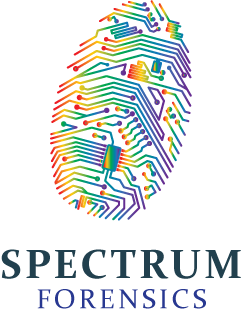NTIA Blog
New NTIA Guide Outlines Strategies, Best Practices for Effective Broadband Stakeholder Outreach
Today, we will be hosting our seventh broadband workshop in Missoula, Montana, where we will have the chance to hear from local leaders, broadband providers, community groups and others. Issues teed up include the importance of engaging with stakeholders who are key to any broadband project’s success. But it’s not always easy to identify who key stakeholders are or the best ways to engage them to help contribute to a broadband project’s success.
To help communities and organizations launch successful broadband projects and generate support from potential users, we created a new toolkit with insights into effective stakeholder outreach gleaned from NTIA’s broadband work over the last seven years. The “Introduction to Stakeholder Outreach” details tools and proven best practices to help communities generate support for broadband projects and share the importance of broadband with key stakeholders.
NTIA Seeks Input as it Develops Initiatives to Increase IPv6 Adoption
We are on the verge of an explosion in the number of Internet-connected devices, from smartwatches to connected refrigerators, furniture and thermostats. Some experts predict that there will be as many as 200 billion connected devices around the world by 2020, or about 25 devices per person.
Many of those devices will need an IP address to connect to the Internet, but the legacy Internet Protocol version 4 (IPv4) supports only about 4.3 billion IP addresses. Current demand has all-but-exhausted the global supply of IPv4 addresses. Luckily, the Internet technical community has been developing the next-generation Internet Protocol for nearly two decades. Internet Protocol version 6 (IPv6) offers 2128 IP addresses – that’s more than 340 undecillion addresses, or 340 followed by 36 digits.
The pace of IPv6 adoption has picked up recently, but only about a third of the Internet services in the United States are IPv6 capable. As IPv4 addresses become more scarce, companies and other organizations that have yet to transition to IPv6 may find it difficult to expand their Internet presence.
Update on the IANA Transition
Two months ago, we passed an important milestone in a nearly 20-year effort to privatize the Internet domain name system (DNS). We announced on June 9 that the transition proposal developed by the Internet multistakeholder community meets the criteria we outlined in March 2014 when we declared our intent to transition NTIA’s stewardship role related to the DNS. While this was a significant moment in this journey, we said in June that the Internet Corporation for Assigned Names and Numbers (ICANN), which currently operates the IANA functions under a contract with NTIA, still had work to do to implement key action items called for in the transition plan.
On Friday, ICANN informed NTIA that it has completed or will complete all the necessary tasks called for in the transition proposal by the end of the contract term. NTIA has thoroughly reviewed the report. We informed ICANN today that based on that review and barring any significant impediment, NTIA intends to allow the IANA functions contract to expire as of October 1.
ISART 2016 Energizes the Conversation on Spectrum Forensics
Earlier this month, about 160 scientists, engineers, mathematicians, policy experts and other participants representing government agencies, academic institutions and industry gathered to discuss an exciting new field of spectrum research aimed at providing novel insights on ways to address radio signal interference. Advances in this area promise to bring improvements to how spectrum is managed, in particular supporting efforts to efficiently and effectively accommodate the constantly increasing demand for use of this critical, limited. and already congested resource.
The 15th International Symposium on Advanced Radio Technologies (ISART), which took place in Westminster, Colo., kicked off with a tutorial on civil and criminal spectrum interference investigations and enforcement actions. Former and current Federal Communications Commission staffers discussed the technical aspects of identifying sources of interference and the policy and legal challenges of enforcement. They emphasized the value of technical cooperation between users sharing spectrum to rapidly mitigate interference.
The State of the Urban/Rural Digital Divide
Spotlight on NTIA: Jean Rice, Senior Broadband Program Specialist, and Don Williams, Senior Broadband Development Officer, Office of Telecommunications and Information Applications
This post is part of our "Spotlight on NTIA" blog series, which is highlighting the work that NTIA employees are doing to advance NTIA’s mission of promoting broadband adoption, finding spectrum to meet the growing demand for wireless technologies, and ensuring the Internet remains an engine for innovation and economic growth.
Jean Rice and Don Williams both work at NTIA – and just so happen to be married.
Jean and Don work for NTIA’s BroadbandUSA team. Jean focuses on developing partnerships with federal agencies and on broadband deployment and adoption in rural and tribal communities, while Don provides technical assistance to local governments, nonprofits, and community groups that are developing broadband deployment strategies.
Increasing the Potential of IoT through Security and Transparency
The Internet of Things (IoT) offers a wide range of consumer benefits – from the ability to control your thermostat or light fixtures through a smartphone, to an Internet-connected home security system, to wearables such as Internet-connected fitness bands and watches and beyond. To help realize the full innovative potential of IoT, users need reasonable assurance that IoT devices and applications will be secure.
One particular area of concern is whether and how to address potential security vulnerabilities in IoT devices or applications through patching and security upgrades. In the early IoT market, there has sometimes been limited consideration for supporting future security patches, even though many devices will eventually need them. Enabling a thriving market for devices that support security upgrades requires common definitions so consumers know what they are getting.
Currently, no such common, widely accepted definitions exist, and manufacturers can struggle to effectively communicate to consumers the security features of their devices. This is detrimental to the digital ecosystem as a whole, as it does not reward companies that invest in patching and it prevents consumers from making informed purchasing choices.
Annual Conference Will Explore Spectrum Forensics
Spectrum sharing is key to meeting the ever-increasing demand for spectrum among commercial and federal users. As sharing becomes more common, federal and non-federal users will need to increase their cooperation and collaboration, and technological advancements will be needed to improve efficiency and protect against interference.
But that’s not enough, because bad actors can undermine and interfere with those users who are acting in good faith. Even those who want to follow the rules may inadvertently cause interference – as when some Wi-Fi installations were shown to cause interference with weather radars operated by the Federal Aviation Administration, the U.S. armed forces and broadcasters.
Inexpensive radios and comprehensive code repositories have given those with limited skills and know-how the ability to misuse spectrum and cause interference with increasing frequency, severity and consequences. To help address this, some of the questions researchers and policymakers are trying to answer include: What are the best practices for isolating an interfering signal and tracking it to its origin, and what should the consequences be for the offending transmitter to prevent future interference?

How Spectrum Enables Agencies to Fight Wildfires
This is part of a series of blogs highlighting how federal agencies use spectrum to carry out important missions for the American people.
When a large wildland fire breaks out, federal agencies have a number of tools at their disposal, from “smokejumpers” who can parachute into remote areas to airtankers that drop fire retardant from the sky.
But those various tactics would be ineffective – if not outright dangerous – without a communications infrastructure available to firefighting crews. The National Interagency Fire Center (NIFC) and the National Interagency Incident Communications Division (NIICD) are responsible for coordinating communications when federal agencies are managing wildfires.
What They're Saying: Reaction to NTIA's Assessment of the IANA Stewardship Transition Proposal
A week ago, NTIA announced that the proposal developed by the Internet multistakeholder community to transition the U.S. Government’s stewardship role for the Internet Assigned Numbers Authority (IANA) functions met the criteria NTIA outlined in March 2014. The announcement was an important milestone in the U.S. Government’s effort to complete the privatization of the Internet’s domain name system. The transition will help ensure the continued leadership of the private sector in making decisions related to the technical underpinning of the Internet, which has helped the Internet thrive as a platform for innovation, economic growth, and free speech.
NTIA worked with other U.S. Government agencies and conducted a thorough review of the Internet community’s proposal to ensure it met our criteria. NTIA also found that the proposal adequately addressed relevant internal control principles, in a review recommended by the U.S. Government Accountability Office (GAO). In addition, a panel of corporate governance experts concluded that the plan is consistent with the sound principles of good governance.


